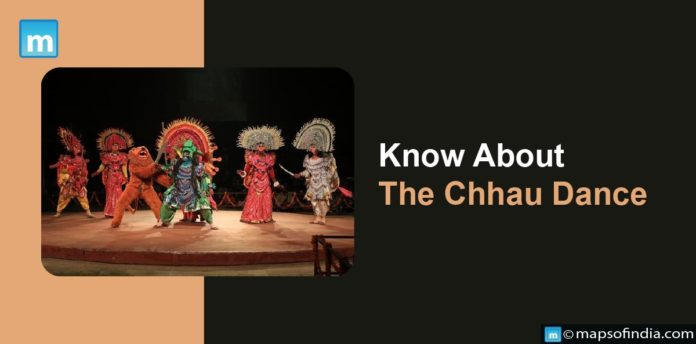Chhau dance is a traditional dance form that developed in the Indian state of Odisha in the east. It is a semi-classical dance that incorporates martial arts, folk dance, and formal theatre aspects. Men practise Chhau dance, recognized for its energetic and acrobatic motions.
History
The roots of the Chhau dance are unknown. However, it is thought to have evolved from Odisha’s martial arts traditions. Warriors used to perform the Chhau dance to prepare for battle and to enhance morale. Chhau dance evolved into entertainment, performed at festivals and other special events.
Styles
Mayurbhanj Chhau, Seraikella Chhau, and Purulia Chhau are the three main types of Chhau dance. Each style has distinct qualities and is named for the location from which it evolved.
- Mayurbhanj Chhau is the oldest and most traditional Chhau dance is Mayurbhanj Chhau. It is well-known for its strong and manly movements.
- Seraikella Chhau is a more graceful and feminine type of Chhau dancing. It is distinguished by its deft footwork and expressive hand gestures.
- Purulia Chhau is a more acrobatic and dynamic kind of Chhau dance. Its high jumps and flips are well-known.
Themes
Chhau dance typically depicts themes from Hindu mythology and epics such as the Ramayana and the Mahabharata. However, Chhau dance also shows themes from folk tales and local folklore.
Costumes and Masks
Chhau dancers dress in ornate costumes with bells, mirrors, and other embellishments. The costumes are intended to be both visually appealing and helpful. The bells on the clothes contribute to the rhythmic sound accompanying the dancing. Chhau dancers also wear masks to symbolise the various characters in the dance. The masks are often made of wood and are ornate and bright.
Music
Traditional Indian music is used to accompany the Chhau dance. The music is performed on several instruments, such as the Dhol (drum), Shehnai (oboe), and Mohuri (shepherd’s flute).
Performance
Chhau dancing is mainly practised at night outside. The dance is done in a vast open venue with a live band of musicians. Chhau dancing is a physically rigorous and demanding dance form. Dancers must have exceptional stamina and agility.
Significance
Chhau dance is an essential component of Odisha’s cultural legacy. It is a beautiful semi-classical dance incorporating martial arts, folk dance, and traditional theatre. Men practise Chhau dance, recognized for its energetic and acrobatic motions. The Chhau dance has several meanings. For starters, it is a means of preserving and promoting Odisha’s cultural heritage. Chhau dance tells stories from Hindu mythology and epics, as well as folklore and local legends. This contributes to keeping these stories and their transmission to future generations.
Second, Chhau dance is an artistic way of expression. It allows dancers to express themselves creatively and tell stories via movement and music. Because it needs a high level of stamina and agility, chhau dance is also a type of physical conditioning.
Third, Chhau dancing provides viewers with amusement and enjoyment. Chhau dance performances are common during festivals and other special events. Tourists can also see Chhau dance, which helps to market Odisha as a cultural destination. Overall, Chhau dance is an important art form that plays a vital role in Odisha’s cultural and social life. It is a means of preserving and promoting tradition, expressing innovation, and entertaining audiences.




